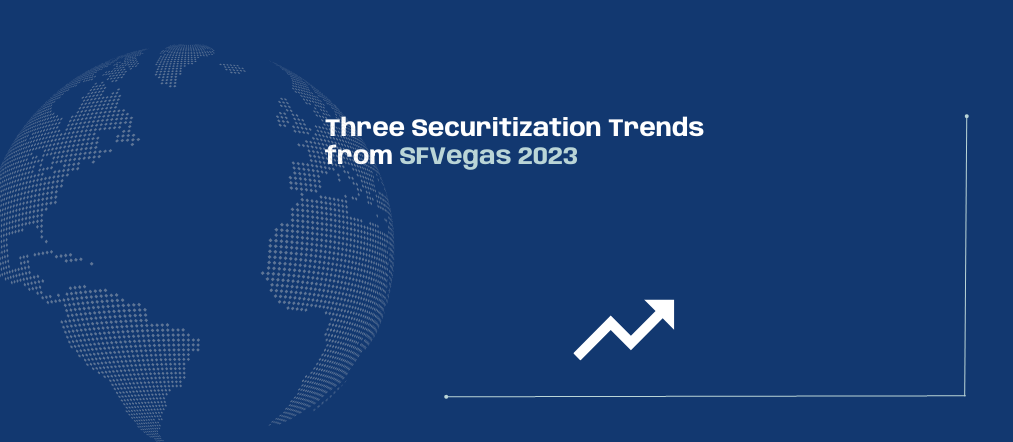In the last week of February, team T-REX attended SFVegas 2023. This conference, one of the largest in the industry, boasted nearly 10,000 attendees and panels full of interesting thought starters, including one featuring our own Director of Client Development, Benjamin Ross.
Of course, given the size of the structured finance market, and the growth it’s experiencing, many trends are rapidly coming to light, although some are poised to be more impactful than others. As an asset-class agnostic platform, T-REX is especially interested in the trends shaping the future of the market as a whole and what technology needs are arising for areas of finance traditionally lacking modern tech and data infrastructure.
Here are three structured finance trends that will impact securitizations in the coming year.
1. It’s Time To Embrace Digitalization
Echoing what many other areas of the finance market are facing, there is continued industry interest in digitalization. While structured finance is a heavily regulated industry, much of its processes have stayed mired in manual and paper-driven processes (just consider the significant resources and capital tied up supporting the custody of assets in the market).
With the more recent work on ledger technologies, and the broader acceptance of cloud-based data, reporting, and analytics, there is the opportunity to completely digitize assets and their data flows. While there is regulatory uncertainty around the classification treatment of assets wrapped in distributed ledger technology, there is also tremendous value in the efficiencies that such a process could bring.
However, a great challenge still remains in codifying offering documents and deal constructs in a way that streamlines the processing of data. If this hurdle is overcome in a way that supports real-world deal intricacies, the movement and delivery of data could be expedited and lead to faster and cheaper transaction closings. It will also allow for better analysis and valuation for less understood assets, creating broader transparency and liquidity for them in the market.
2. ESG Reporting Needs To Catch Up
ESG investment continues to grow for companies globally, although reporting metrics have been unable to keep pace with its rapid expansion. With performance in solar asset classes remaining strong, investment is poised to continue growing, and sponsors and investors will need a way to ensure they’re receiving the information they need to manage their portfolios. While there has been some progress with ESG taxonomies, further guidance on reporting and thresholds will need continued industry support as well as alignment from both issuers and investors on which metrics are essential.
In addition, there’s also a call to better align ESG mandates with the broader reporting standards of the market, such as accounting standards. With a more regulated reporting structure for ESG investments, it will be easier to understand how they perform against more traditional investments and easier to persuade more hesitant investors to diversify into the market.
3. Blockchain Isn’t Just for Crypto
One topic that came up in a number of panels was blockchain and distributed ledger tech. Often, when people mention blockchain, crypto immediately comes to mind. While these terms are often used in tandem, blockchain actually just refers to the technology that has helped fuel the crypto market. Simply put, blockchain technology creates a shared, fixed ledger that records transactions and tracks assets.
Most securitization deals require extensive data management and reporting, all of which is being done separately by different entities in the deal process. This creates issues with version control of models as well as transparency in performance reporting throughout a deal.
Blockchain has the potential to change this bureaucratic back-and-forth process by creating an agreed-upon standard when using a particular ledger system. It can streamline the transactions that make up the securitization or facilitate data integrity within the set of participants accessing the ledger. When integrated properly it could help act as a source of trust for transaction-level data.
While the adoption rate of blockchain technology remains to be seen, several major players are already taking part. It will be interesting to see how this tech may become fundamental to structured financing projects.
Looking Towards SFVegas 2024
Together, these structured finance trends all indicate a thirst for more efficiency and better transparency in reporting. While the industry can be slow to make sweeping changes to workflows, each of these trends indicate a need for more rapid adoption of technology in order to support better deal-making and higher yields overall.
Interested in learning more about how technology can support your portfolio management? Check out T-REX for Structured Finance and learn how modern technology can bring transparency and collaboration to your deals.
